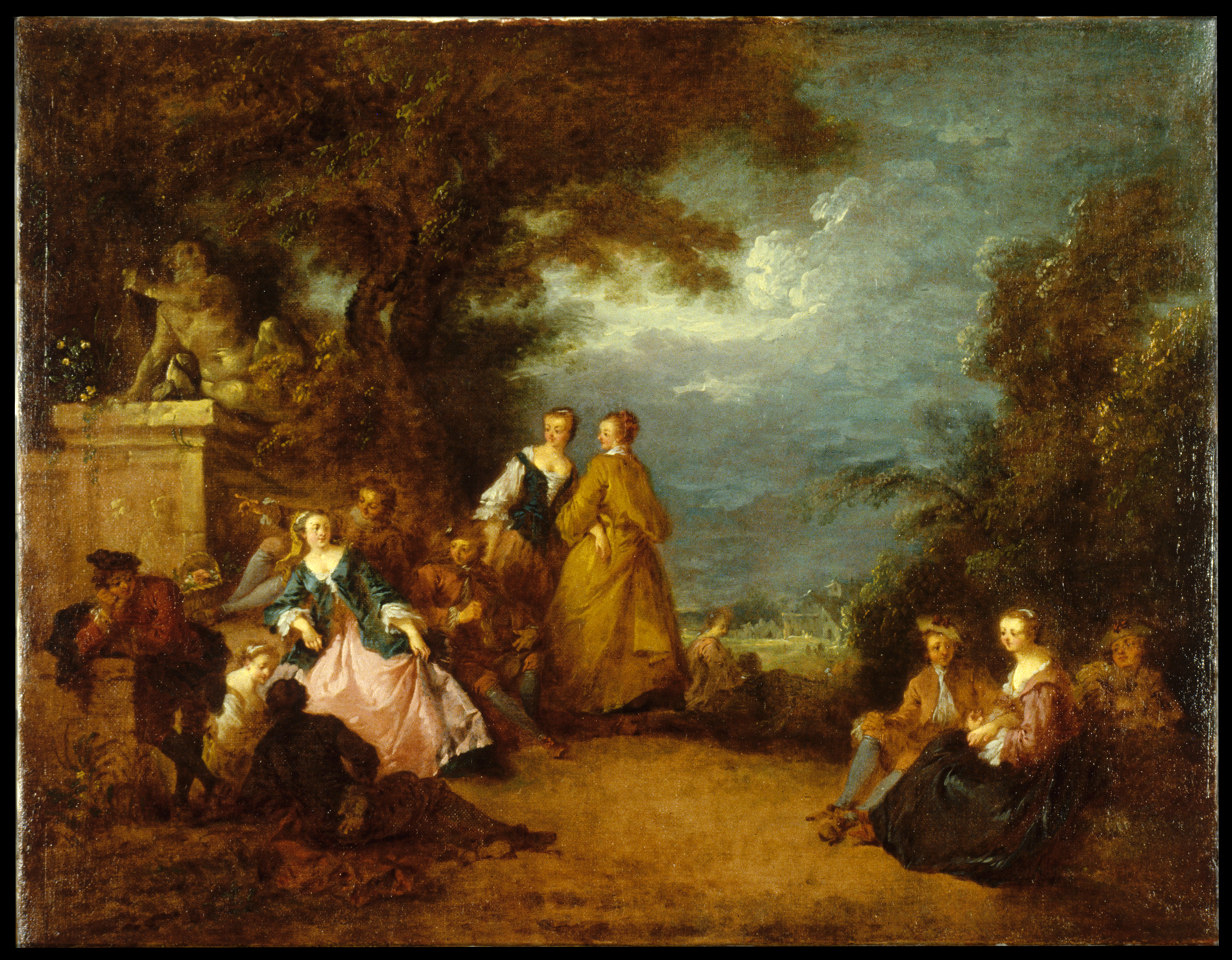Fête Champêtre
(18th and 19th Centuries )
This painting was originally attributed to Jean Baptiste Joseph Pater, an artist who specialized in idealized park scenes with amorous couples, known as "fêtes champêtres," a category of painting associated with the early 18th-century master Jean-Antoine Watteau (1684-1721). Recent research has indicated that it is more likely by Bonaventure de Bar, a follower of Watteau.
Provenance
Provenance (from the French provenir, 'to come from/forth') is the chronology of the ownership, custody, or location of a historical object. Learn more about provenance at the Walters.
Glaenzer and Co.; Henry Walters, Baltimore, 1904 [mode of acquisition unknown]; Walters Art Museum, 1931, by bequest.
Conservation
| Date | Description | Narrative |
|---|---|---|
| 12/15/1936 | Treatment | cleaned; varnish removed or reduced; x-ray |
| 3/18/1984 | Treatment | cleaned; coated; filled; inpainted; lined; media consolidation; other; re-housed; repaired; surface cleaned; varnish removed or reduced |
| 10/18/1996 | Examination | examined for condition |
| 3/18/2000 | Examination | examined for condition |
Geographies
France (Place of Origin)
Measurements
14 1/4 x 18 1/4 in. (36.2 x 46.3 cm);
framed: 26 x 30 x 4 1/2 in. (66 x 76.2 x 11.4 cm)
Credit Line
Acquired by Henry Walters, 1904
Location in Museum
Not on view
Accession Number
In libraries, galleries, museums, and archives, an accession number is a unique identifier assigned to each object in the collection.
In libraries, galleries, museums, and archives, an accession number is a unique identifier assigned to each object in the collection.
37.413


